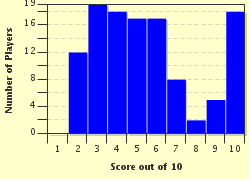Quiz Answer Key and Fun Facts
1. In general, when testing for neuropathies, it is more beneficial to look at the patient's static posture rather than his movements.
2. If the ulnar nerve was impacted, where would the patient most likely feel tingling of the skin?
3. In ulnar nerve neuropathy, the wrist is deviated slightly toward the radial side, i.e. the thumb side. This is due to the denervation of which forearm muscle?
4. The ulnar tunnel at the wrist is a fairly common location for impaction of the ulnar nerve. After which French surgeon is the tunnel often named?
5. Which of these tests is carried out to detect ulnar nerve neuropathy?
6. Which disorder is the most common manifestation of median nerve neuropathy?
7. If the median nerve is damaged, it would result in the loss of which action?
8. Why does damage to the radial nerve decrease the strength of the grip so markedly?
9. The radial nerve is frequently impacted by a break of which arm bone?
10. In a patient with radial nerve neuropathy, tingling or numbness would occur in the skin on the back of the hand.
Source: Author
reeshy
This quiz was reviewed by FunTrivia editor
CellarDoor before going online.
Any errors found in FunTrivia content are routinely corrected through our feedback system.

